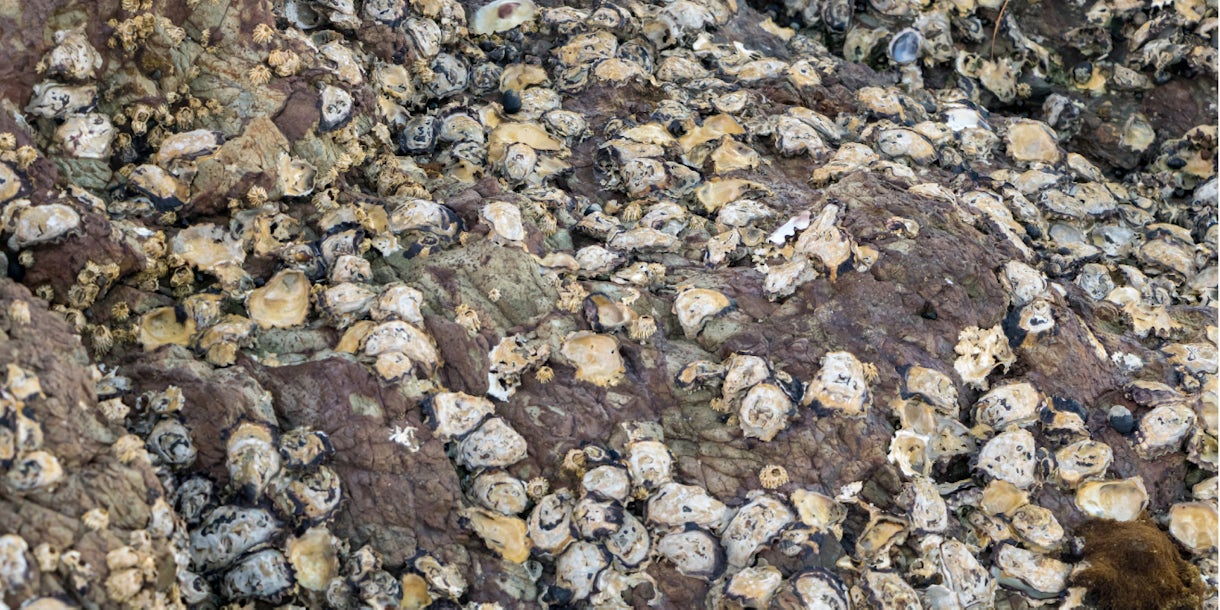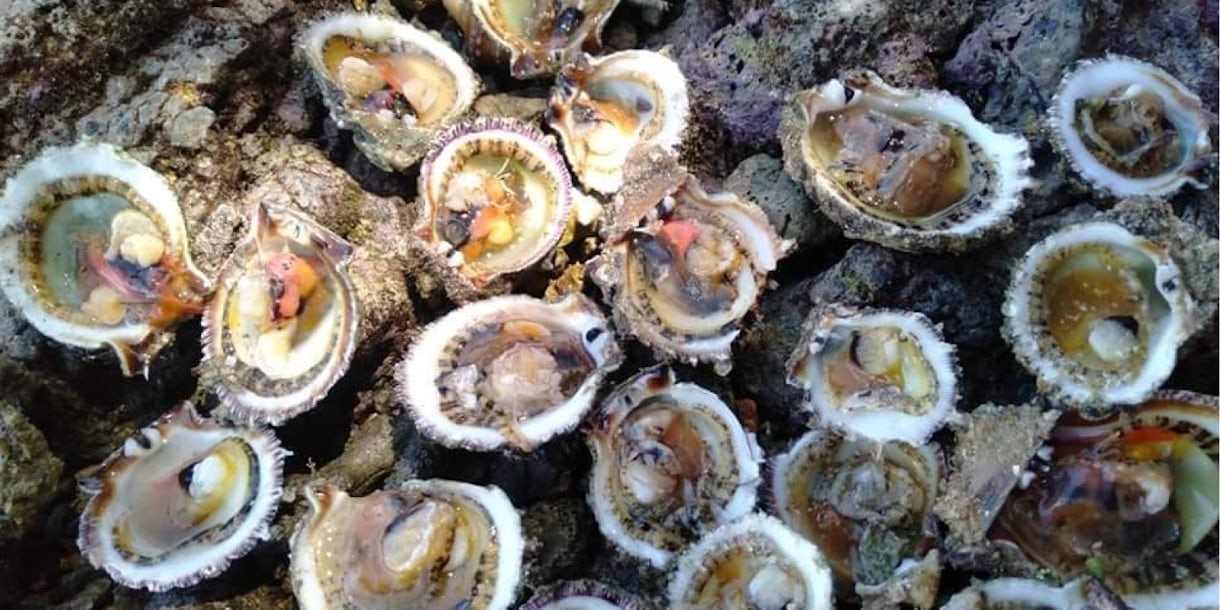Oysters 101: Getting to Know an International Delicacy
A Starter's Guide
A Shellfish with a History
People have eaten oysters as far back as the Stone Age, tossing them onto heated stones to cook until the shells popped open to reveal their tender interiors. It was the Greeks and Romans who first treated this shellfish as a delicacy eaten raw. Oysters were associated with the Goddess of Love, Aphrodite (Venus), part of the reasons they’re considered modern-day aphrodisiacs—not because they have actual love-chemical qualities! With the fall of the Roman Empire and the loss of many valuable scrolls of knowledge, oysters all but drifted into anonymity throughout the Dark Ages. They reemerged during the Renaissance as the pièce de résistance on the tables of kings, dukes, and wealthy merchants alike.

A close up look at Le Déjeuner d'huîtres or The Oyster Dinner by Jean-François de Troy, France's leading history painters in his time. Dated in 1735, it depicts a lavish post-hunt oyster lunch celebrated with the first ever appearance of champagne in a painting.
The Golden Ages of the oyster came in the late 18th and 19th century. Oysters were so cheap and abundant that the streets of London were littered with their shells. People ate them fresh-shucked off barrels in the markets and the larger specimens were cooked into stews and pies, roasted with fowl, and even stuffed alongside pork in sausages. Across the Atlantic, Dutch-settled Manhattan became the place to sample oysters in the United States.
The oyster beds of New York Harbor became one of the largest sources of this shellfish around the world in the late 1800s, and oyster saloons (restaurants specializing in oysters) all over the continent were proud to bring in crates and crates from the Empire State.
From the richest of the tycoons to the poorest worker on the docks, oysters were available to anyone and everyone.
Of course, all good things come to an end. With the sharp rise in demand, over harvesting drove availability down, both from the natural oyster beds and man-made oyster farms. Today, oysters are once more considered luxury food, cultivated and harvested sustainably in different places around the world. About 95% of the oysters consumed in the restaurants and oyster saloons of the world are now farm-raised.

Oyster and clams sellers near Mulberry Bend Park, a public park in New York City, circa 1900s. New Yorkers of all socioeconomic classes are eating oysters, and lots of them
Essential to Nature
Oysters are a treat to us, but in nature, they play a more vital role. Wild oysters can live for 25 to 30 years, though most only live to about six. They act as natural filters, purifying the bodies of water in which they live. They pump water through their gills to capture algae for food, like living strainers.
Healthy oysters can filter anywhere between 30 to 50 gallons of water a day. That’s the same amount of water it takes to fill a full-sized bathtub!

Textures of wild growth. Wild Oysters in New Zealand attached to rocks, during a low tide.
Most oysters live clustered in reefs of brackish water and saltwater bays, shallow ocean areas, and estuaries. They help diffuse energy from strong storms and tides, preventing erosion and protecting the estuary waters where many marine animals breed. Many of these animals, from crabs, mussels, and snails to herring, anchovies, and menhaden live in and hide from predators in the oyster beds. They eat the tiny creatures and organisms there, and they in turn provide food for turtles, shorebirds, and fish such as red drum, flounder, striped bass, and spotted sea trout.
Not All Oysters are Considered Equal
Few people know that there are actually different kinds of bivalves called oysters, valued for their meat, their shells, or the precious gems they produce.
“Pilgrim oyster” is another name for the scallop. Saddle oysters are inedible, but their shells are used in shellac, glue, paint, and chalk. The tikod amo of Surigao del Sur in the Philippines is an example of the thorny oyster, generally found in tropical and subtropical waters, and is sought after as both food and decoration. Many other oyster-like shellfish exist, but they are generally more valued for their shells and other parts than for their meat.

Tikod amo is the Kamayo language name for an edible oyster species, a species of marine bivalve mollusk that is found in the coastal waters of Lianga Bay in Barobo Surigao del Sur in the Philippines.
All shell-bearing mollusks can secrete some form of polished stone, but only the pearl oyster, the pinctada of the pteriidae family, can produce that most-coveted gemstone of the seas.
They possess a strong inner layer called nacre, which is also called mother of pearl. When bits of sand or floating debris enter these oysters, they cover the intruders in the nacre. It takes several years and several layers of nacre to form pearls.
The true oyster, the gourmet’s prize, is that family to which all edible oysters belong. Family ostreidae, as it is scientifically called, branches out into a handful of genera and species, and it is from this handful that over a hundred known varieties come from.
Oysters Around the World
From the Oyster Bar in Grand Central Station in Manhattan, New York to Wright Brothers in London’s Borough Market, the oyster lists can be overwhelming in length and breadth.
Oysters are generally classified by the coastal waters they grow in, then the varieties are further differentiated by specific bays and basins and even the ways they are “finished” (transferred or handled in their last months or weeks before harvesting). Each type has a different texture and flavor, even leanness or plumpness depending on their region.
Pacific Oysters, also called Japanese Oysters or Miyagi Oysters, naturally grow and are farmed along the Pacific coasts of the United States and Japan. These are some of the larger edible varieties, growing to an average size of between 3” to 6” (8cm to 15cm). Occasionally, they can grow to a full foot. They have solidly hard, whitish shells with a rough feel, and their meat tends to be velvety and smooth with a sweet, slightly earthy taste and creamy overtones. They aren’t as briny as other varieties.
Kumamoto Oysters are Pacific Oysters that are native to Japan and other coastal regions of the western Pacific. They tend to be small, growing to an average of 2” (5cm). Some subspecies are even smaller. They have fluted, greenish-white shells and have ivory white meat with a dense, soft texture and a hint of brine. They’re generally sweet, almost fruity, and are perfect for those experiencing oysters for the first time.
Another breed of Pacific Oyster found in another part of the world is the Bouzigues Oyster. Over 10,000 tons of these oysters are produced exclusively in the Thau Basin, an inland sea separated from the Mediterranean by a cordon of dunes. One acclaimed oyster grower in the area is Maison Tarbouriech, which produces oysters that are twice as full and fleshy as others in the basin.

There are three types of oysters that are cultivated and eaten in Ireland: the native or European flat oyster, the Portuguese rock oysters, and the Pacific oyster as seen in photo.
European Flat Oysters are a shallow saltwater variety that grow between 1.5” to 4” (4cm to 10cm) and are known for their flat, pear-like or oval shells. They’re also known as Belon Oysters (if they come from the Belon River in France) or mud oysters. Their pale grey to creamy white meat ranges from tender to firm, on the sweet but mildly briny side, with coppery or metallic overtones. Because of their texture, these oysters are good for cooking, as ingredients for soups, stews, or even baking.
Atlantic Oysters, also called American Oysters, Wellfleets, Blue Points, or Eastern Oysters are native to North America and are similar in size to the Pacific Oysters. They measure between 3” to 7” (8cm to 18cm), with hard white or gray-brown shells and purple streaks. They don’t tend to be as sweet as the Pacific varieties, with a distinct saltiness and strong sea flavor. Their meat is occasionally considered creamy with a mushroom-like earthiness and, as a cold-water variety, a slight crispness. These flavors vary distinctly depending on where they are harvested.
For example, the Malpeque Oysters of Prince Edward Island are particularly famous for their clean look and taste with a moderately brined flavor.

French Fine de Claire Vertes Oysters from Geay which have bagged the silver accolade at the French Agricultural Contest, “Medalle D’Argent Paris.”
One of the finest oyster finishes in the world is the Fine de Clair. These oysters are identified by their hard shell and elongated shape. They are raised in the open sea along the French coast for at least three years before being transferred and generously spaced-out in the (salt ponds) for about twenty-eight days (usually between November to March). This resting period gives the oysters a sweeter, fruitier flavor.
Acclaimed oyster grower David Hervé produces a special variety of finished oyster, the Fine de Ronce, in Charente-Maritime. These oysters spend two whole years in the of Ronce, France, after which their meat makes up almost 20% of the whole oyster’s weight.
There are as many varieties of oysters as there are different palates and predilections. As you continue on your tasting journey, you’ll develop a sense of which ones you prefer. For a guide to choosing fresh oysters, pairing them, and serving them to their best advantage, stay tuned for Part 2 of this series.
Until then, as Jonathan Swift suggests, be bold!
